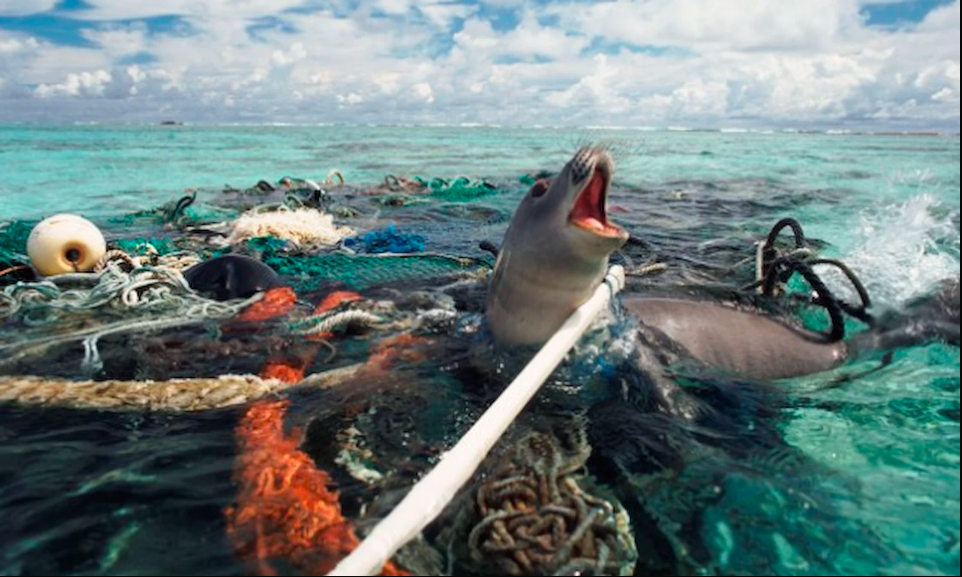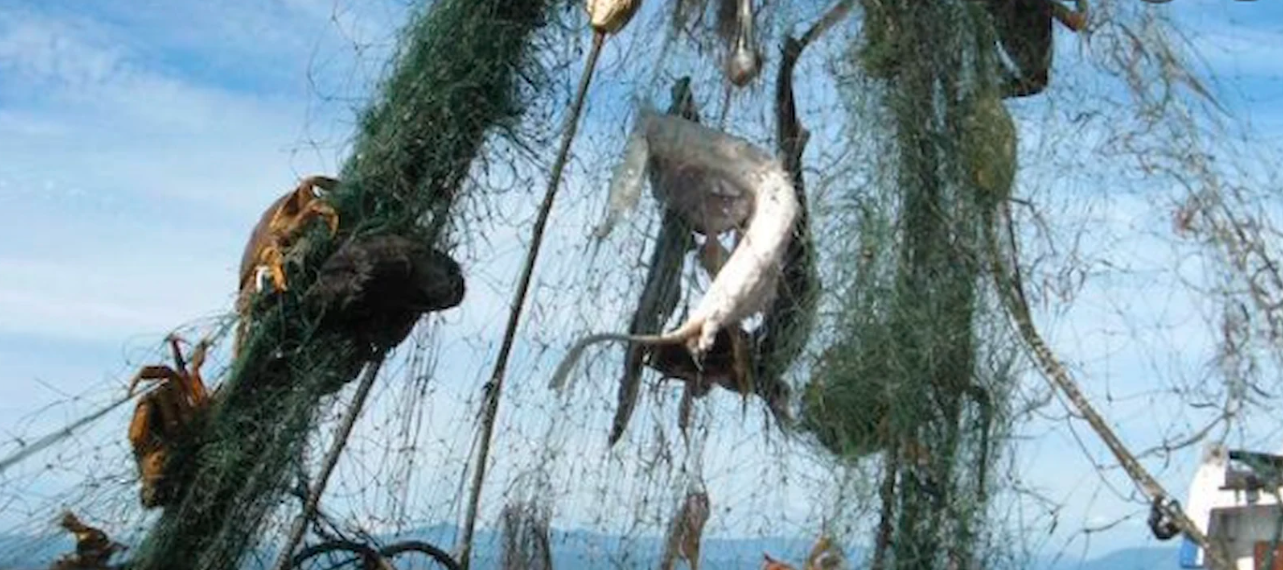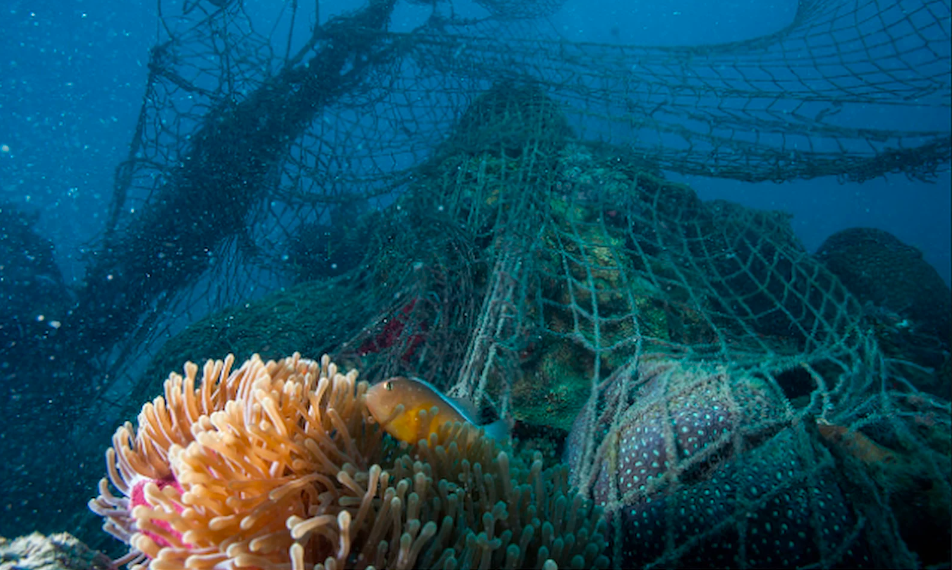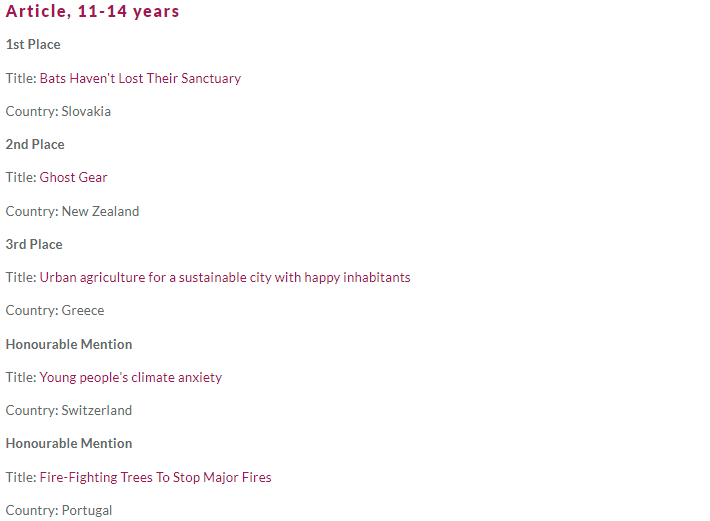YRE Competition 2022
2nd Place - Article
11-14 years old
By Chloe Croft
Every year, hundreds of thousands of tonnes of commercial fishing gear are being abandoned in our ocean. Commercial fishermen have been discarding their nets, pots, lines, traps, and other fishing gear which has been entangling or strangling our marine life and ruining marine habitats.
In July 2019, Greenpeace reported on research which found that fishing gear from New Zealand commercial fisheries was discovered on a remote Pacific Island, 5,000 kilometres away1. On this particular island, a large proportion of the plastic litter found was from commercial fishing companies, including gear like ropes and buoys, nets, and buckets. Some of these items were still stamped with New Zealand fishery logos.
This shows how far fishing gear pollution can travel with the ocean currents, and how fishing gear pollution has become a worldwide problem. According to Elizabeth Hogan, the U.S. oceans and wildlife campaign manager at World Animal Protection - 640,000 tons of ghost gear is hauled out of the water each year. But some areas are more highly affected than others. In 2016 Elizabeth Hogan reported- One of the biggest areas affected is in Hawaii. “They remove close to 60 tons of gear every single year from the same spot. Since Hawaii doesn’t have a net-fishery, much of this ghost gear travels across the Pacific from those waters where nets are used.”2
The reason this is becoming more of a problem is that the fishing industry worldwide has begun to increasingly use plastic in nets, pots, lines, and ropes, as well as other commercial fishing equipment, over the last two decades. Plastic’s qualities such as durability, buoyancy, and cheapness make it ideal for fishing equipment. Sadly, these same qualities also make the lines and nets a deathly threat to marine life, and the communities around the world that depend on healthy, thriving marine life.
A lot of Fishermen have been ignoring the cons to this, and have been continuously using these plastic nets. It has become such a problem that “Ghost gear” - meaning abandoned fishing gear- is estimated to make up 10% of ocean plastic pollution but forms the majority of large plastic littering the waters. A study found that as much as 70% (by weight) of macroplastics found floating on the surface of the ocean was fishing-related.
In NZ there are very strict rules about fishing yet fishing gear is either being abandoned here or it is drifting from around the world onto our coasts, strangling our marine life. The sustainability manager for Sealord NZ thinks that discarded fishing gear is not a big problem in New Zealand but discussions with local Hawkes Bay fishermen have a different opinion. Wayne Bicknell of Legasea HB and a recreational fisherman have found that a lot of the fishing gear and other plastic is washing up on NZ shores. Which makes it a threat to seabirds. Wayne says that waste on the beach is mostly fishing nylon and bait packaging. Even though this may not be the outstanding issue in New Zealand right now, it will be soon enough.
A solution is obvious. We need to make nets, lines, pots, bait packaging, and any other fishing gear biodegradable. Globally, one tonne of new ghost fishing gear is lost or discarded in our oceans every minute. A report on “Ghost Gear” shows that 6% of all nets used, 9% of all traps, and 29% of all longlines remain as pollution at sea3. Not only does this old fishing waste go on killing marine life, but it also seriously damages underwater habitats. If it was biodegradable it would have much less of an effect on the environment.
If making fishing gear biodegradable is too costly or just not a good solution, there are other possible solutions.
Sealord NZ’s current sustainable process includes using electronic sensors on their fishing nets to monitor the whereabouts of the gear and provide this data to Fisheries NZ. This is a good solution however it is not 100% reliable.
Hawkes Bay fisherman Karl Warr has a different approach to keeping our marine life safe. The current cage Karl uses is made of stainless steel and it lets under-sized fish swim out of the gaps. It’s a built-in filter for the catch, and it means that more than 90% of the catch is usable.
The survival rate of trawl-caught fish with a usual net is slim because they are hurt in the process of trawling by the compression in the net. Although the undersized fish are tossed back over the side, they usually float away and die. The cage Karl uses gives him greater control over the things he catches and also means that the fish that have been caught are in better condition and can be sold as higher quality for more money. This benefits Karl and the environment.4
If we take initiative in the next couple of years we can begin to eliminate this problem before it becomes dangerously big. Keep New Zealand Beautiful!
REFERENCES:
1.https://www.greenpeace.org/aotearoa/story/this-is-what-ghost-fishing-does-to-the-ocean/
2. https://www.sierraclub.org/sierra/green-life/ghost-gear-haunts-world-s-oceans
3. https://www.ruraldelivery.net.nz/stories/Allstar-Fishing-s-Sustainable-Catch
DISSEMINATION
National News website:
https://www.kiwikidsnews.co.nz/ghost-gear-causing-problems-for-environment/
National Operator:
https://www.knzb.org.nz/programmes/education/young-reporters/yre-2021-winners/
Local News sites:
https://www.pressreader.com/new-zealand/hawkes-bay-today/20210925/281578063810082
https://www.facebook.com/HawkesBayToday/posts/4594747083903173
Community: Local Fishing Club notice board (refer to email screenshot 1 below)
School intranet: (refer to email screenshot 2 below)
YRE International Hub: (refer to email screenshot 3 below)




